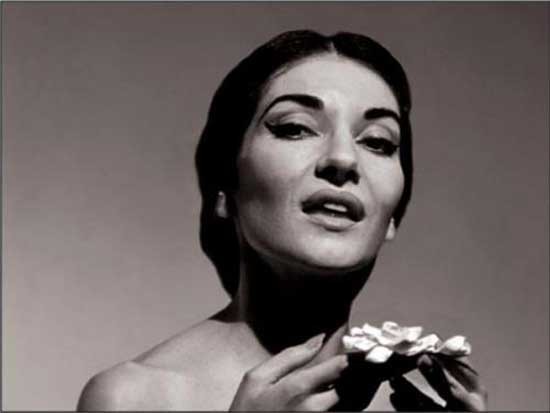We often here say, especially by foreigners, that Italian is characterized by an innate musicality that makes this language wonderfully pleasant to listen to.

Maria Callas.
Many argue that our language sounds almost like a song and proves likeable and gentle.
They are, of course, judgments that often stem from personal taste and are very difficult to evaluate on an objective basis.
Opinions regarding the Italian language in the history of European and foreign culture are, in fact, too many to count: think for known example of an opinion on our native language dates back to 1388 and is of English origin; it is found in the prologue to the second edition of the Wycliffe Bible.
We must consider that already in pre-Renaissance Italian was the language of the European culture and that during this period flourished the great humanists and writers who contributed to the affirmation of Italian from Latin.
The appreciation of Italian as a noble language, however, was achieved only in the seventeenth century. For the Englishman James Howell, Italian is “the best composed language in terms of fluency and smoothness”. Voltaire spoke of the “beautiful Italian language, Latin’s firstborn sibling”.
The recounts of travel through Italy by the North and Central European nobility, in the time of the so-called grand tour, are the peak moments of the glorification of Italian as a noble and musical language.
Which are the reasons that underlie such judgments?
We could start by borrowing the opinion of one of the most important Italian humanists, Piero Bembo, who claimed in 1525 that “two are the reasons that make beautiful every composition, gravity and pleasantness; and the things that than fill and make these two parts are three: sound, number, variation “. From this point of view Italian has unique characteristics.
Gravity is mainly given by the amount of syllables and the characteristics of each in the construction of the word, i.e. their length in pronunciation. The modulation of the syllables in Italian is very interesting because certain words, if taken singularly, show a distinguished syllabic pronunciation from those obtained if contextualized in a sentence: this for pronunciation needs.
In fact, one of the main reasons why this occurs is because almost all Italian words end with a vowel.
But there is another, almost unique characteristic that distinguishes Italian from many other languages: Italian has the invaluable advantage of the use of double consonants. The intrinsic dance, the musicality that is often atributed to our language is probably due to this peculiarity, which creates a very interesting change in respect to the preceding vowels. Take for example the word “pena” (pain, punishment, …): here the first vowel has a normal duration and comparable to the second one, while the “n” is barely perceptible, almost only a support of the language. In the word “penna” (pen), on the other hand, the “e” undergoes a sharp contraction and the double consonant is rich, resonant, clear: pure rhythm.
The practice of certain phonetic and poetic choices, as the elision – or the elimination of a letter from a word – contributes greatly to changing the length of the syllables and to creating an alternative to the monotonous rhythm of a constant repetition of similar syllables.
This is because the elision creates the same effect of the double consonant where this cannot be used. An example is given by the famous concluding verse of L’infinito by Leopardi: “e il naufragar m’è dolce in questo mare” (and it is pleasant for me to be shipwrecked in this sea). The elisions (in bold) create a very strong rhythmic break, which affects the previous syllables.
Of course, the presence of the double consonant is not the only feature that makes our language so musical and lyrical. In poetry, in fact, examples abound with phonetic solutions and rhetoric figures, capable of altering the rhythm and cadence of the speech.
However, it is precisely the double consonant, so common in ordinary language that fascinate the foreign listener and transmit this sweet feeling of a rhythmic dance in the Italian language.


